Have you noticed the designs and patterns decorating yoga studios but never understood their meanings?
Learning about yoga symbols opens doors to ancient wisdom that has guided spiritual seekers for centuries. These images carry messages about balance, protection, and inner growth that can level up your practice.
You don’t need to be religious or spiritual to appreciate the artistry and history behind these designs. I’ll help you decode the most common symbols you encounter in yoga spaces and classes.
By the end, you’ll understand the popular symbols, including Om, lotus flowers, and mandalas. You’ll know their origins, meanings, and how to use them respectfully in your practice.
What are Yoga Symbols?
Yoga symbols are visual representations that connect practitioners to ancient wisdom and spiritual teachings.
These Sanskrit symbols originate from Indian traditions and have been in use for thousands of years. Each symbol carries specific meanings related to meditation, philosophy, and spiritual growth.
Many spiritual symbols serve as tools to help focus the mind during meditation and practice. They represent concepts such as balance, unity, protection, and inner peace that guide practitioners on their spiritual path.
Common symbols include the Om symbol, lotus flower, and various geometric patterns called mandalas.
These symbols appeared long before modern yoga classes and connect to Hindu and Buddhist traditions. Understanding their background helps you decide how symbols fit into your personal yoga practice and beliefs.
Why Yoga Symbols are Important for Practitioners?
Yoga symbols help practitioners focus their minds more effectively during meditation and breathing exercises.
Many people find that looking at or visualizing symbols helps quiet mental chatter and distractions. Symbols can serve as anchor points that bring attention back to the present moment.
These visual tools connect to chakra concepts and energy flow ideas in traditional yoga philosophy.
Some practitioners believe symbols help balance different energy centers throughout the body during practice. Symbols can deepen spiritual awareness for those who choose to study this aspect of yoga.
If you use symbols, it depends on your personal goals and comfort level with traditional elements.
Most Recognized Yoga Symbols and Their Meanings
I’ve compiled fifteen symbols that appear frequently in yoga practices and spiritual traditions around the world.
These symbols range from sacred sounds and geometric patterns to protective emblems and meditation tools that carry deep meaning:
1. Om (Aum)

Om is one of the most sacred symbols in yoga, representing the sound of the universe. It symbolizes cosmic consciousness and the essence of creation.
The curves stand for waking, dreaming, and deep sleep states. The dot represents enlightenment, while the crescent marks illusion. Chanting Om unites mind and body, helping deepen meditation.
2. Lotus Flower
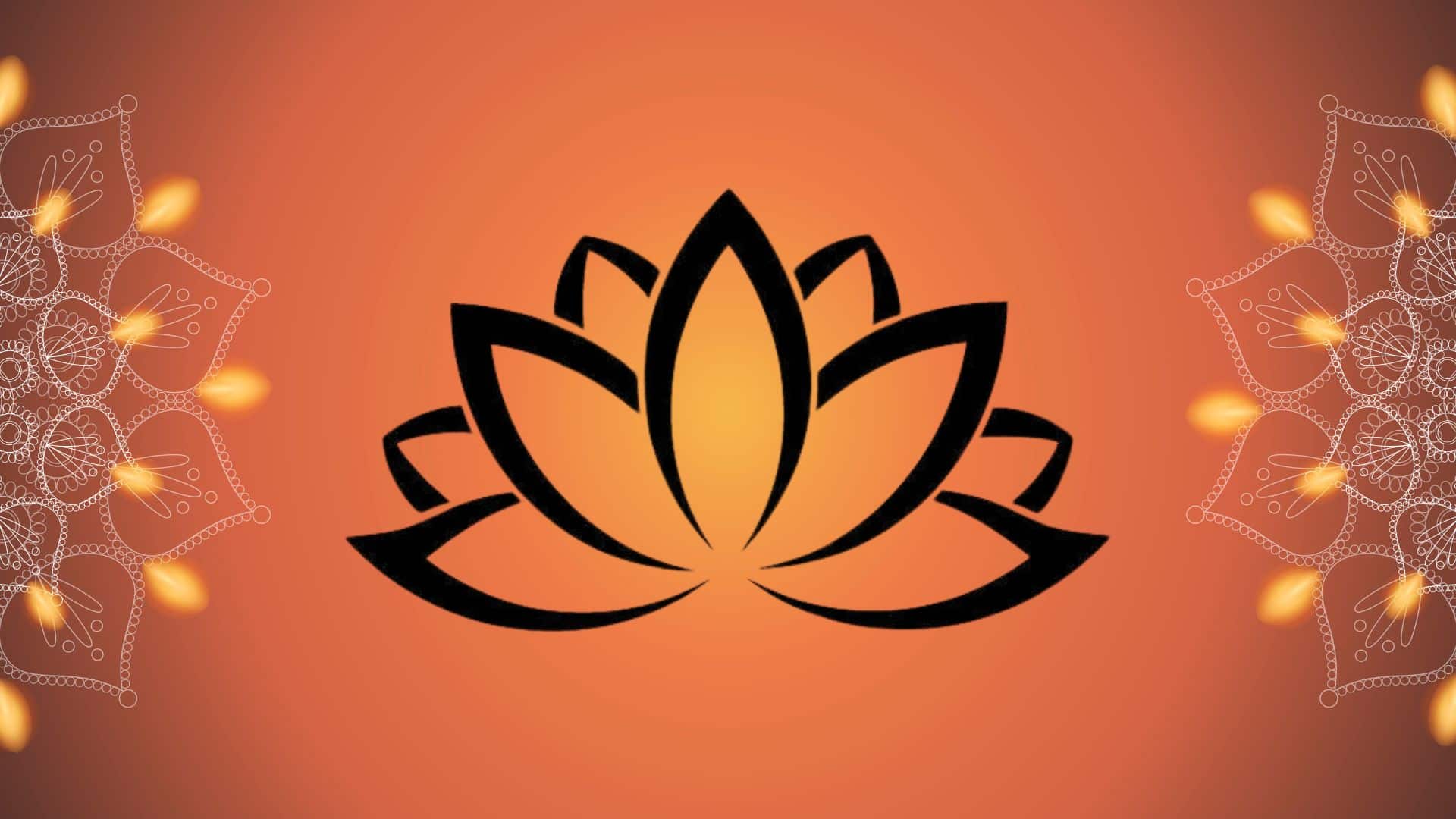
The lotus flower symbolizes purity and spiritual awakening. It blooms clean and beautiful from muddy waters, showing how people can rise above life’s struggles.
Different colored lotuses represent qualities like wisdom, love, peace, and enlightenment. It is also connected to meditation postures, symbolizing personal growth and the unfolding of inner beauty.
3. Mandala

Mandala is a Sanskrit word meaning circle. Mandalas represent unity, harmony, and the universe’s wholeness.
These geometric designs aid meditation and spiritual focus. Creating or viewing mandalas helps practitioners feel connected to the divine and the natural order of life.
4. Chakras
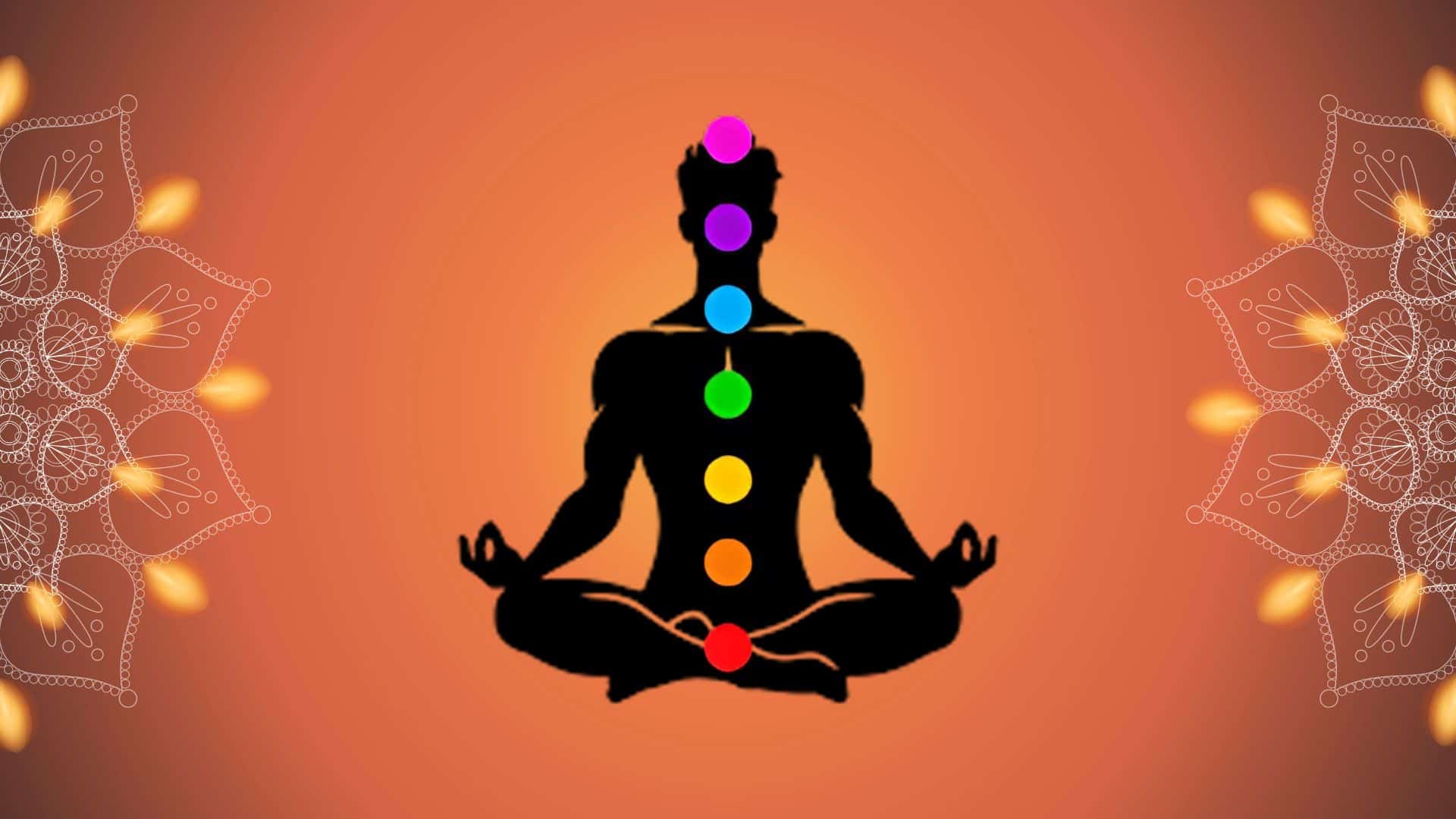
Chakras are seven energy centers along the spine affecting physical, emotional, and spiritual health.
Each chakra has its unique symbol, color, and meaning. Yoga and meditation work to balance chakras, improving well-being and spiritual awareness.
5. Hamsa Hand
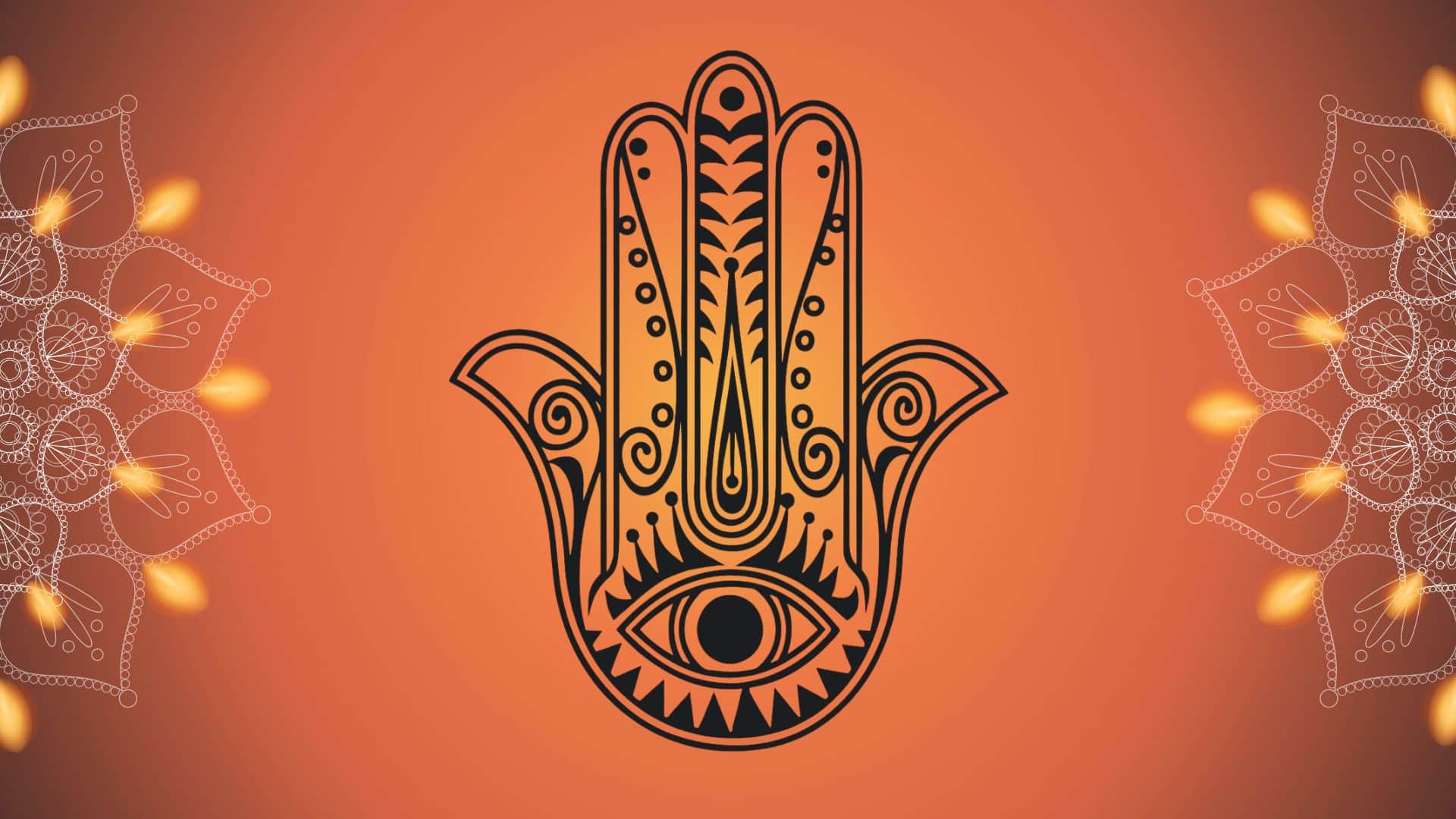
The Hamsa Hand is a protective symbol believed to ward off evil. It represents God’s hand protecting people from harm.
This symbol links to peace, blessings, and spiritual safety in yoga and other spiritual traditions worldwide.
6. Sri Yantra

The Sri Yantra is a complex geometric figure formed by nine interlocking triangles. It symbolizes harmony and the balance of masculine and feminine energy.
Practicing meditation with the Sri Yantra facilitates spiritual growth and a deeper connection to cosmic power.
7. Ganesha Yantra

The Ganesha Yantra symbolizes the Hindu god Ganesha, who is known for removing obstacles and granting wisdom.
It promotes balance and success in spiritual and worldly pursuits. Meditating on this yantra inspires confidence and clarity.
8. Mudras

Mudras are special hand gestures used in yoga and meditation to guide and balance energy flow in the body. Each mudra has its own meaning and health benefit, like reducing stress, improving focus, or calming emotions.
These gestures help deepen meditation by connecting body and mind, enhancing spiritual awareness and physical healing during yoga practice.
9. Mala Beads

Mala beads are a string of 108 beads used to count mantras or breaths during meditation. They help practitioners keep focus and rhythm while repeating prayers or chants.
Mala beads symbolize spiritual discipline and concentration, supporting deeper meditation and mindfulness. Carrying or wearing malas is seen as a reminder of spiritual intentions and devotion in yoga and meditation.
10. Yin-Yang
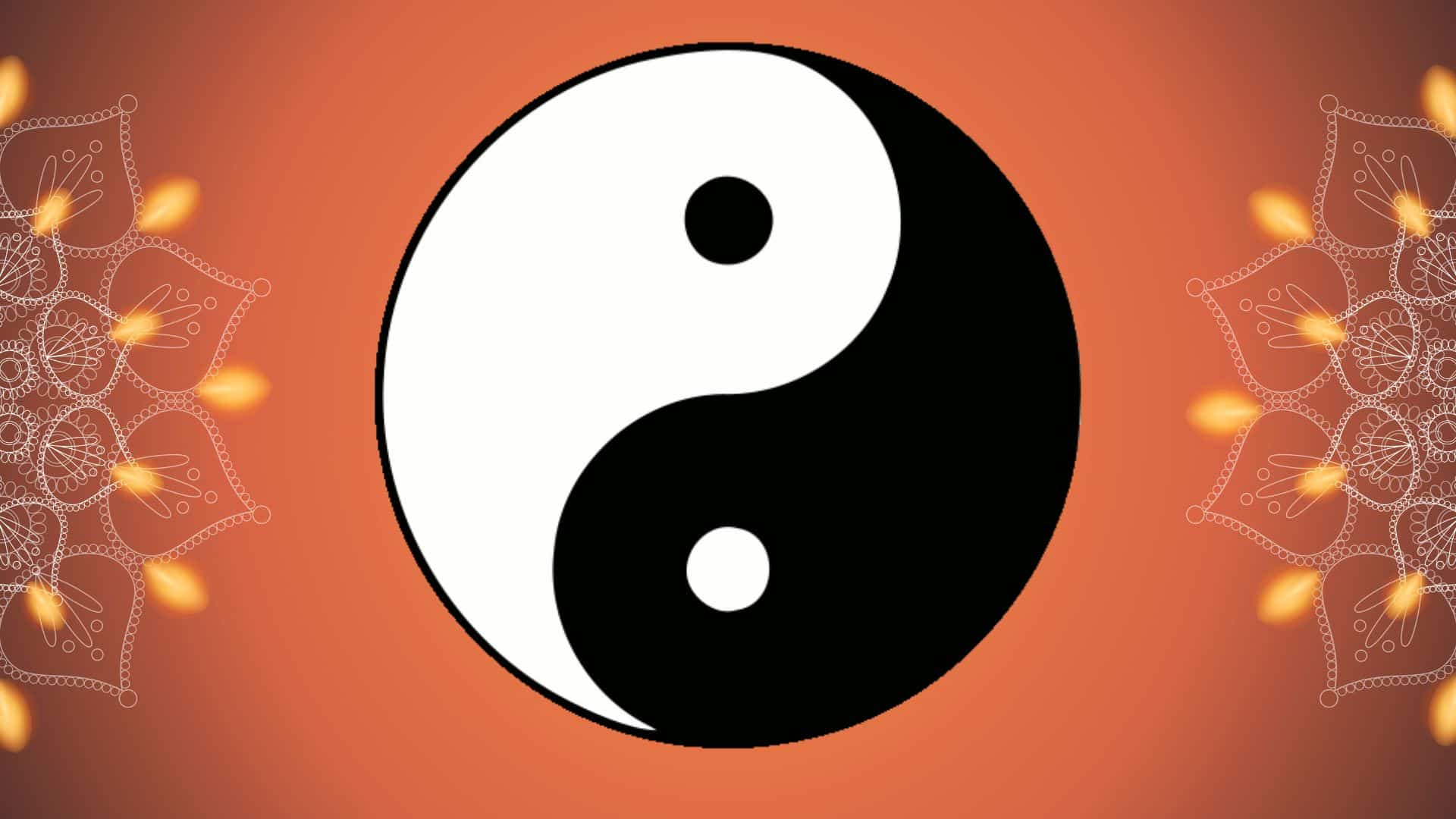
Yin-Yang is an ancient symbol representing balance between opposites like light and dark, or masculine and feminine. It shows that opposite forces are connected and restore harmony in life.
In yoga, Yin-Yang reminds practitioners that balance between body and mind is important for peace, health, and spiritual growth.
11. Buddha

The Buddha symbolizes mindfulness, calmness, and spiritual awakening. Images or statues of Buddha inspire meditation and personal growth.
They encourage living with compassion, awareness, and inner peace. In yoga, the Buddha is a reminder of the goal to awaken to truth and live in harmony with self and others.
12. Trishula
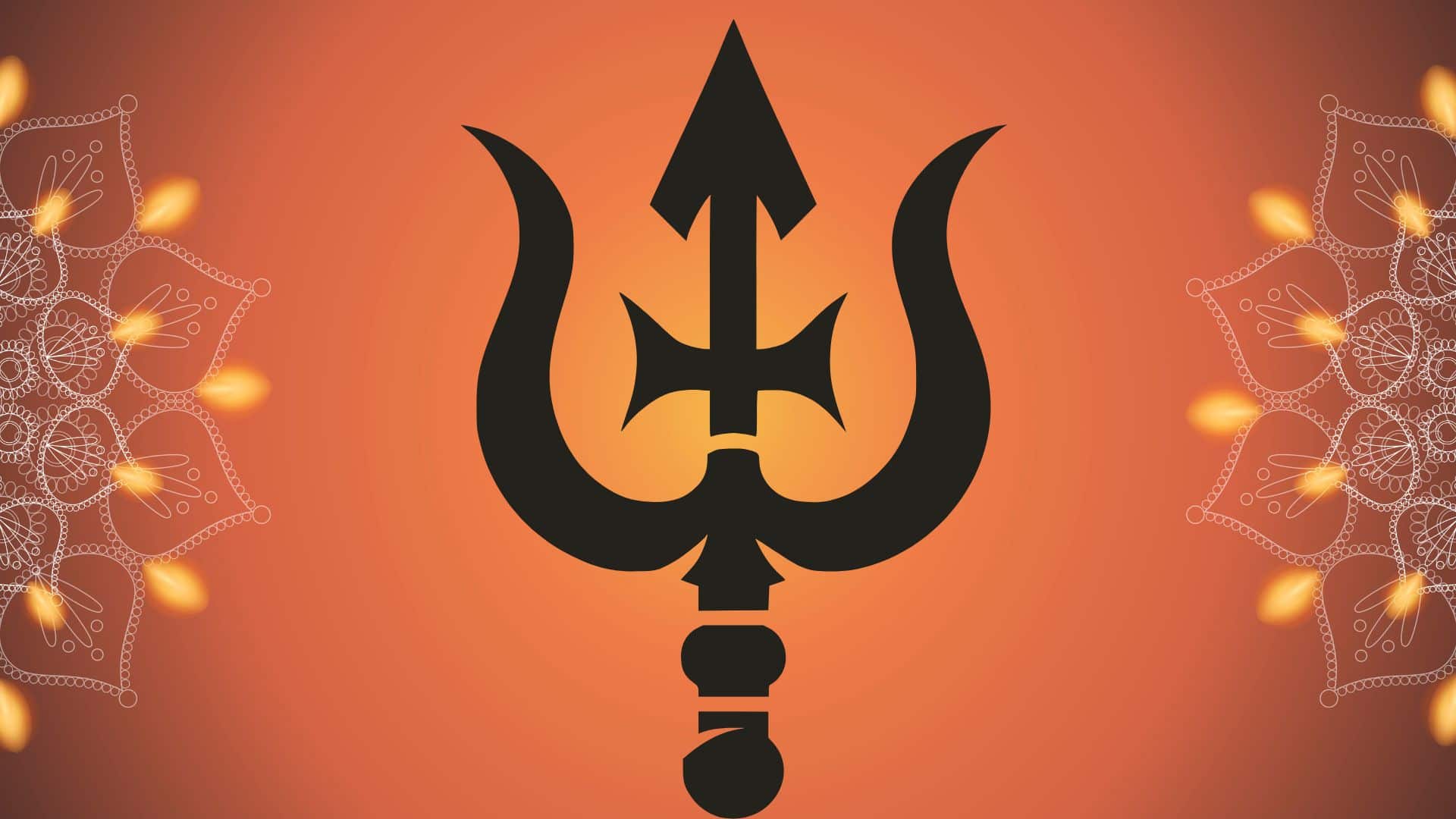
Trishula is a three-pronged trident that symbolizes creation, preservation, and destruction. This Hindu symbol represents the cycle of life, growth, and change.
In yoga, Trishula reminds practitioners that change is part of spiritual evolution and encourages them to welcome life’s changes with grace and power.
13. Infinity Knot
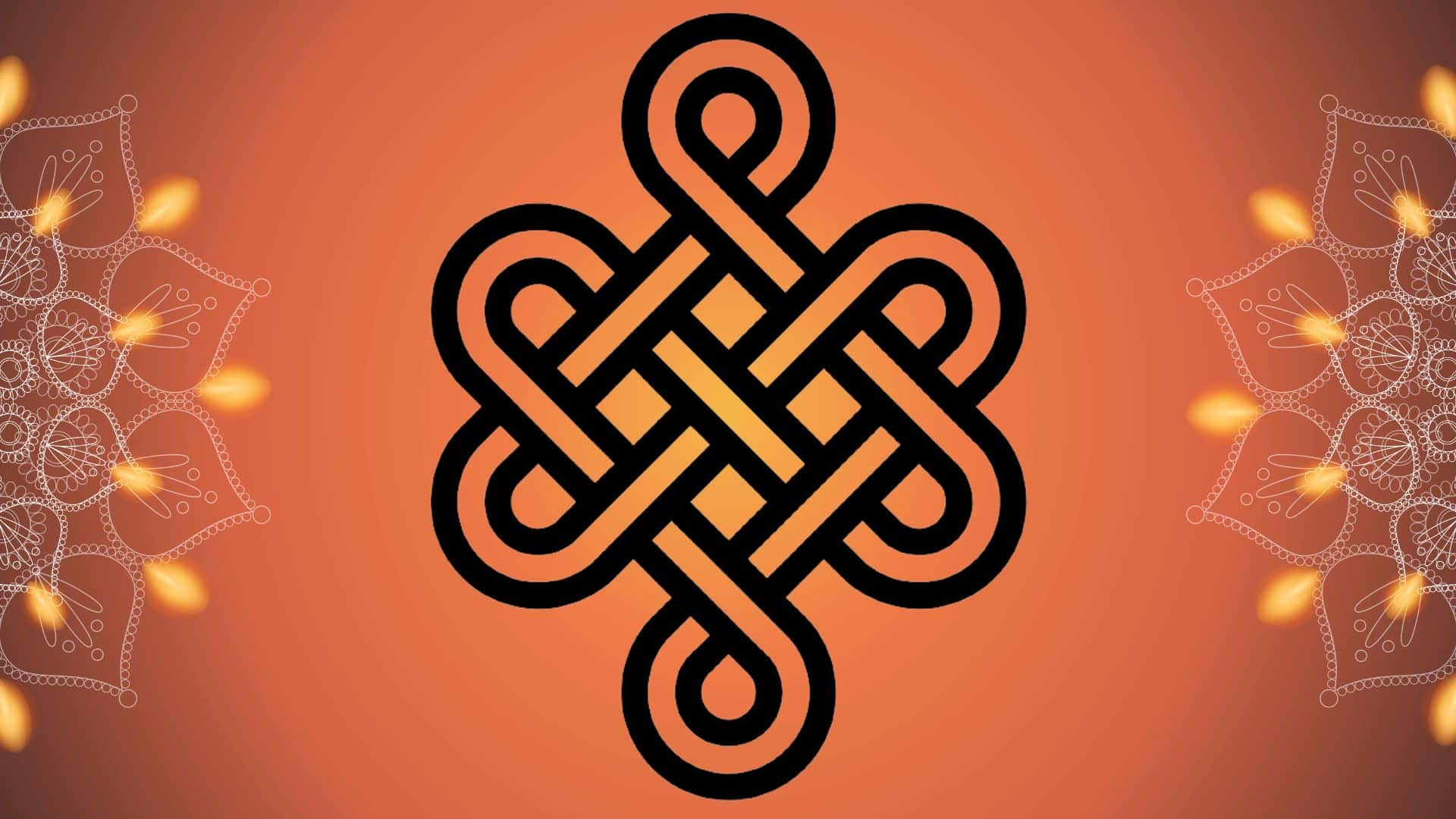
The Infinity Knot symbolizes eternity, endless cycles, and the interconnectedness of all life. It reminds yoga practitioners of the continuous flow between body, mind, and spirit.
This symbol encourages welcoming unity, balance, and the timeless nature of the universe in yoga philosophy and practice.
Popular Uses of Yoga Symbols in Modern Life
Yoga symbols appear everywhere in modern culture, from tattoos and jewelry to home decorations and studio walls.
Many people choose these designs for their beauty and spiritual meaning in their personal lives. Om symbols, lotus flowers, and mandalas are popular choices for body art and accessories.
Some people use symbols purely for decoration, while others seek a deeper spiritual connection. Yoga studios often display symbols to create peaceful atmospheres that support meditation practices.
However, using symbols from other cultures raises important questions about respect and understanding.
Many symbols hold sacred meaning in Hindu and Buddhist traditions that deserve thoughtful consideration. Learning about their original significance helps ensure you use symbols appropriately rather than just for trends.
How to Use Yoga Symbols in Your Practice?
Incorporating symbols into your yoga routine can deepen focus and enhance your spiritual connection during practice.
These simple methods help you use symbols meaningfully without overwhelming your sessions or daily routine:
- Place symbols in your meditation space as visual anchors to help focus your mind during practice.
- Use chakra charts during poses to visualize energy flow and balance throughout your body.
- Practice drawing or coloring mandalas before meditation to calm your thoughts and center yourself.
- Wear meaningful symbol jewelry as gentle reminders to stay mindful and present throughout your day.
Start with one or two symbols that feel meaningful to you rather than using many at once. Remember that symbols work best when they support your practice goals rather than becoming distractions from your focus.
Controversies and Misunderstandings About Yoga Symbols
Yoga symbols, deeply rooted in Hindu traditions, are often misused in modern practice, sparking controversy.
Many use Sanskrit symbols and deities without understanding their sacred meanings, reducing them to fashion or decoration. This lack of knowledge can offend communities where these symbols hold deep spiritual significance.
Cultural appropriation happens when elements of yoga are taken without respect or understanding, sometimes commercialized or misrepresented. This erases yoga’s rich cultural heritage and perpetuates power imbalances.
Proper appreciation involves honoring yoga’s origins, understanding symbols, and practicing respectfully. Such mindfulness promotes cultural sensitivity and helps prevent the dilution or disrespect of these important spiritual traditions. More community insights can be read in this Reddit discussion.
Final Thoughts
You now have the ability to recognize and appreciate yoga symbols in studios, artwork, and daily life around you.
Remember that these symbols carry cultural significance that deserves respect rather than casual appropriation or misuse.
I encourage you to choose symbols that truly resonate with your values and practice goals rather than following trends. The most important thing is approaching these ancient symbols with an open heart and genuine curiosity about their origins.
Your yoga practice becomes richer when you connect with traditions that span thousands of years. Drop a comment below sharing which yoga symbols speak most powerfully to your personal spiritual path!





